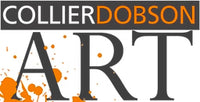The month of March is a great time to acknowledge the vital contributions that women have made and continue to make to the arts, culture, society, science, and technology throughout history. Not only do we celebrate Mother’s Day but, since 1911, the 8th has been observed as International Women’s Day, and Women’s History Month has occupied the whole of March since 1987.
In all fields of history, women have played a part in shaping the world in which we live - including the art world.
In 1912, avant-garde painter Natalie Goncharova was among the first Russian artists to assimilate the concepts of French cubism and Italian futurism in the Cubo-Futurist movement with her piece Airplane over a Train. Her work helped alter the course of art history, and (according to Sotheby’s) she is now one of the most expensive female artists at auction, alongside Louise Bourgeois and Georgia O’Keefe.
Women’s role and contributions in art, however, have not always been well documented, nor celebrated. Patriarchal societal structures in which power is held by and passed down through elder males historically led to women being kept from paths of achievement, and a notion that women were less talented, capable, or interesting was contrived. Interestingly, from the Dark Ages to the 17th century the majority of accepted and commissioned art forms in Europe were religious in nature, and in Western society it was often considered taboo for women to paint icons, thus leaving little opportunity for women to contribute with such restricted arenas.
Even when those limitations were surmounted by women, their achievements were often ignored, co-opted, or simply not promoted as achievements relative to a definition set by male values. During the Rennaissance, women were permitted a restricted level of participation in the arts, and were encouraged to produce work that was modest, and embodied what were considered ‘feminine traits’ such as beauty and grace.
Although it was largely undocumented, there were a number of female artists who were integral to shaping the artistic movement of the time, including Plautilla Nelli, who is widely accepted as being the first-known female artist of Renaissance Italy. As a woman, she was not permitted formal training nor to study male nudes, so, as a nun of the Dominican order at the convent of St. Catherine of Siena in Florence, she would often practice by copying motifs from religious texts and sculpture. Her large-scale painting Last Supper graced her convent’s refectory wall until the early 19th century before being placed in storage, and it wasn’t until 2019 that it finally went on public display at Santa Maria Novella Museum, alongside the work of other ‘masters’. Flemish Renaissance painter Catharine van Hemessen is attributed with painting the first known self-portrait of an artist at their easel in 1548 - a compositional approach now recognised as a linchpin of historical standard.
Accomplished female artist Judith Leyster worked at the same time as Dutch master Frans Hals, in the 17th century, had a similar artistic style, and was well respected during her lifetime. However, after her death, she was no longer referenced, nor was she credited to the same degree as her male counterpart, and was only brought back into the spotlight when it emerged that several of her paintings had been falsely attributed to Frans Hals - including La Joyeuse Compagnie in the Louvre, Paris.
Check back with us next week for part 2 of Women in Art, in which we will explore female artists of the 20th century and the representation and influence of women in the contemporary art world.







